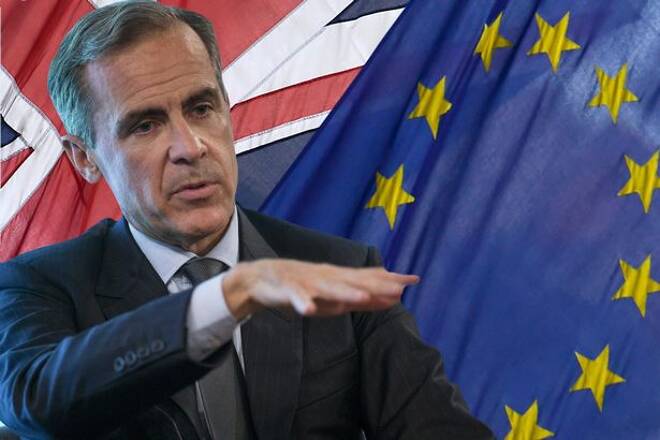Advertisement
Advertisement
Second Wave of Selling Hits British Pound as Carney Warns of More Stimulus
By:
The British Pound was the biggest loser for the second week in a row as investors continued to hit the Sterling over the uncertainty caused by last week’s
The British Pound was the biggest loser for the second week in a row as investors continued to hit the Sterling over the uncertainty caused by last week’s vote by the U.K. to leave the European Union. The GBP/USD opened lower on Monday and never looked back, taking out the previous week’s low on a move to a 31-year low at 1.3117, before settling at 1.3267, down 0.0382 or -2.80%.
Some of the early selling pressure last week came from investors who had held on to the Sterling after the first wave of selling hit on June 25. They were hoping for some clarity following a week-end of contemplation after the Brexit vote. However, nothing happened that would alleviate political and economic uncertainty.
More uncertainly came about as talks of a Scottish referendum and potential Scottish block of the U.K. leave vote was seen as clouding the way forward. European officials also want to see the U.K. leave quickly to limit the disturbance to the Euro Zone.
Most European officials want Britain to invoke Article 50 to redefine its relationship with the EU but leaders of the leave campaign refused to act last week. It is being predicted that the longer the U.K. waits, the worse it will be for the Sterling.
Sellers took a breather about mid-week, allowing the British Pound to strengthen against the U.S. Dollar and Euro. Some investors said last week’s sell-off was overdone, while others were betting on central banks to rescue the global economy if needed with more stimulus.
The mid-week rally didn’t last very long as sellers reemerged after Bank of England chief Mark Carney warned that the central bank could enact further monetary easing as soon as August.
Carney said the central bank would likely need to further ease monetary policy this summer, leading some to believe the BoE would cut rates this month at its next meeting. He also hinted that other stimulus measures would be considered aside from cutting rates.
Recently Carney ruled out negative rates which means the MPC will only have two 25 basis point cuts available, considering the rate currently stands at 0.50%. This implies that the bank may prefer to introduce unconventional measures, such as expanding the quantitative easing program.
Despite attempts to prop up the Sterling last week, it looks as if investors are finally coming to the realization that Brexit will happen, putting to rest speculation that political and economic maneuvering might prevent Parliament from following through on the vote. With Carney now talking about further easing in August, the Sterling is likely to continue to feel selling pressure.
About the Author
James Hyerczykauthor
James Hyerczyk is a U.S. based seasoned technical analyst and educator with over 40 years of experience in market analysis and trading, specializing in chart patterns and price movement. He is the author of two books on technical analysis and has a background in both futures and stock markets.
Did you find this article useful?
Latest news and analysis
Advertisement
